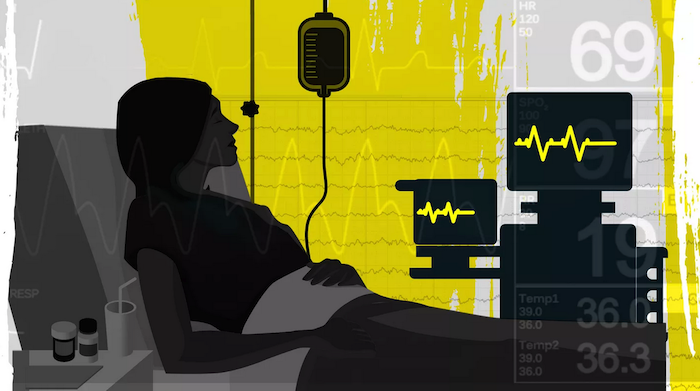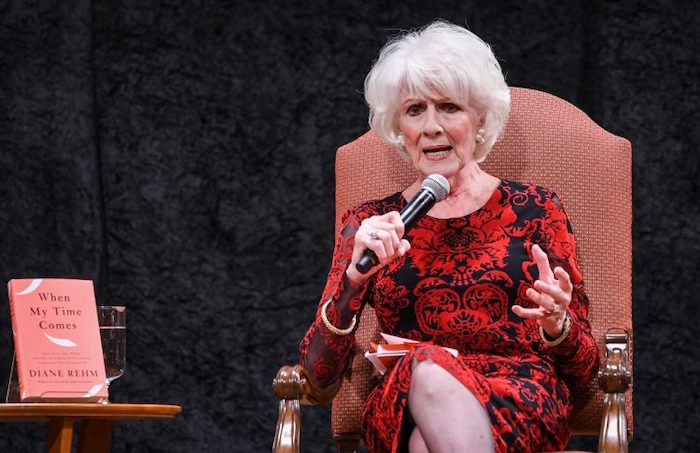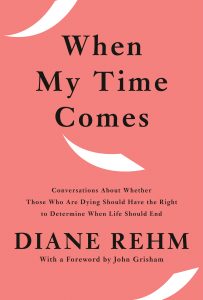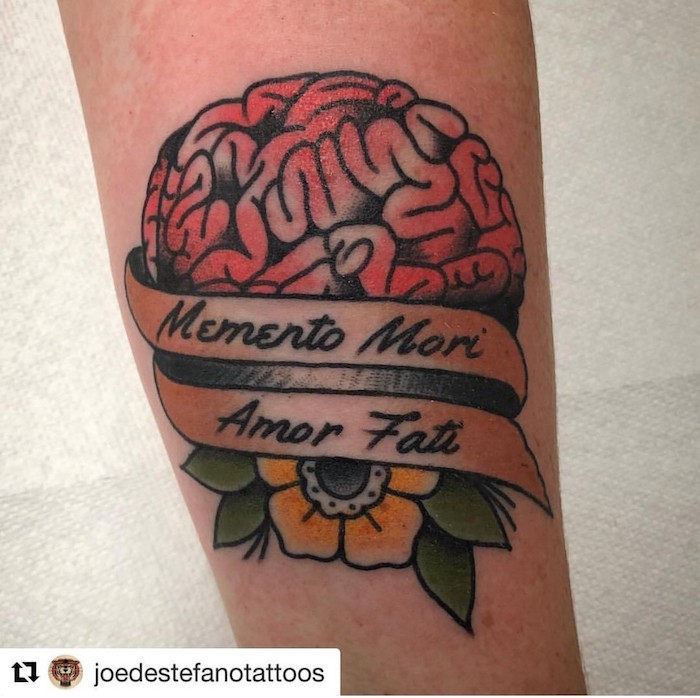By Rebecca Ruiz
Liz Eddy has lost track of how many times she’s told the story that led her to co-found Lantern, a website that helps people tackle the complex logistics of losing someone they love and also plan for their own deaths.
That story starts with a phone call on a Saturday morning from a nursing home with news that Eddy’s grandmother had died. Two police officers and a nurse greeted Eddy in the room where her grandmother’s body lay.
“They looked at me and said, ‘What do you want to do?'” recalls Eddy, who was 27 at the time. “I had no idea what to turn to … and really was just thrown into a rapid Google search where I typed in what do you do when someone dies?”
“I was just thrown into a rapid Google search where I typed in what do you do when someone dies?”
Eddy, who lost her father as a child, anticipated this moment. Her grandmother, who was frail, had done some pre-planning. She’d written a will, completed an advanced directive for her medical care, and told Eddy where she kept important paperwork and belongings.
But Eddy quickly learned that there’d been oversights, including how she might close certain accounts, stop auto-refill prescriptions, and find online passwords. Eddy figured she’d rely on a comprehensive online resource that could walk her through what to do but found none. Instead, she embarked on a “scavenger hunt of websites” for answers.
“I fully expected to find something like Lantern,” she says.
In the midst of coping with her grief and trying to settle her grandmother’s affairs, Eddy walked in the door of her best friend Alyssa Ruderman’s home, and said, “We’ve got to do something about death.”
The pair launched Lantern last fall with $890,000 in pre-seed funding. The website offers free checklists for users who need to plan a funeral, help dealing with logistics that follow a funeral, or assistance sorting out their last wishes in advance of their own death. The site has thousands of users, and to Eddy’s surprise, 40 percent of them are 35 and younger.
Lantern’s appeal to millennials speaks to a number of trends. They may help older parents plan for what happens when they die and then decide to make similar arrangements for themselves. Accustomed to having everything in their lives optimized or organized by a digital tool, the 35-and-under crowd may view online end-of-life planning as a helpful service like any other they use.
In general, talking about dying seems less taboo to many millennials. They encounter the “positive death” movement online, which aims to make conversations about death normal and routine. But millennials also live in a world that seems beset by crisis, whether that’s mass shootings, climate change, or coronavirus. Contemplating what the end looks like is part of being alive.
Anita Hannig, an associate professor of anthropology at Brandeis University who studies death and dying, says people — not just millennials — increasingly want to express their unique selves in death as in life.
The challenge is getting people comfortable enough to consider what that looks like. Eddy and Ruderman have designed Lantern to sound like a compassionate friend who knowingly takes your hand. The site isn’t morbid but instead offers practical information about the choices we can make before we die, like hiring a death doula and how to write a will. Users can compare different burial options, learn how to select life insurance, and explore how they want to be remembered online.
“A lot of people still think that if you’re talking about death too much, there’s an eerie way you’re bringing it about,” Hannig says. “In some ways, having a website like this [is] making death so much more manageable so that you can focus on the actual process of death and dying when it happens.”
Viana McFarland, a 25-year-old New Yorker, discovered Lantern after an employer-sponsored financial planning workshop prompted her to think about what might happen to her belongings and modest savings after she died. After searching Reddit and Google for resources, she found Lantern.
“There were small things I didn’t think about,” McFarland says.
That included the specifics of her burial. McFarland learned that she could let her body decompose in a “mushroom suit,” which hastens the breakdown of a corpse using mushroom spores and other microorganisms. She explored how to donate organs and leave money to the ACLU and Planned Parenthood. Most of all, McFarland wanted to spare her loved ones stress, confusion, and conflict. The time she spent on Lantern felt useful and productive.
“I guess younger people, with more resources at our hands, might become informed sooner or in a different way than our parents and grandparents were,” says McFarland.
More than three dozen articles on Lantern offer advice and insight on common questions. Its checklist offers a step-by-step guide to managing your last wishes. Tasks include making a funeral financial plan, safely storing financial information so it can be accessed by a loved one, and writing a last will and testament.
Lantern is also sentimental. The checklist prompts users to reflect on their legacy, asking about the three best decisions they ever made, what advice they’d give to their younger selves, and what they’d want their grandchildren to know about them.
“These questions were really developed because we started to realize that people don’t ask these questions of their loved ones, and it’s often the thing you think about when they’re gone,” says Eddy, who personally longs to know stories from her father’s life.
While it’s crucial to record the practical and sentimental information, Lantern must also deliver on keeping it secure. The site uses encryption and currently doesn’t collect information it doesn’t feel equipped to protect, such as passwords, wills, and Social Security numbers.
Instead, its business model is based on referring users to services that specialize in certain products, and which Eddy and Ruderman have personally vetted. For estate planning, Lantern recommends Legal Zoom. To help loved ones close online accounts, it suggests the password manager 1Password. Lantern can receive a referral fee when its customers sign up for such services. Eddy and Ruderman are also exploring pitching Lantern to organizations, like life insurance companies and hospitals, whose clients need the information the site has to offer. They’re making the same case to human resources departments who could use Lantern as a benefit for employees who, like McFarland, don’t know how to start end-of-life planning.
Though Lantern will probably offer a premium subscription to users in the future, Eddy and Ruderman are adamant that its basic how-to content and checklists will never be paywalled.
“We don’t think people should not have access to this information because they do not have means,” says Eddy.
The company can take that stand because it’s a public benefit corporation, which means it plans to pursue a mission-driven approach while also seeking a return for investors.
“Our vision is to be the central resource that any one person uses to navigate their life before and after a death.”
Nancy Lublin, an entrepreneur who is the founder and CEO of Crisis Text Line and the former CEO of DoSomething.org, made an angel investment in Lantern. Lublin knows Eddy and Ruderman from their previous roles at Crisis Text Line and DoSomething.org, respectively.
She said in an email that Lantern is poised to serve a “huge untapped market. Millennials, in particular, are bound to find Lantern appealing.
“How the heck are people going to deal when their parents and grandparents (fyi: enormous boomer generations) pass away?” wrote Lublin, noting that millennials use digital tools to find everything from roommates to lovers to marijuana. Of course they’d want something similar to help them manage death.
Eddy and Ruderman are aiming to become the first thing anyone turns to when it’s time to grieve a loved one or plan for the end of their own life.
“Our vision is — and always will be — to be the central resource that any one person uses to navigate their life before and after a death,” says Ruderman. “That is our North Star.
Eddy is buoyed by the possibility that she’s helping others avoid what she experienced following her grandmother’s death: “You don’t have to be forced to pick the first thing you see on Google,” she says.
Complete Article ↪HERE↩!











